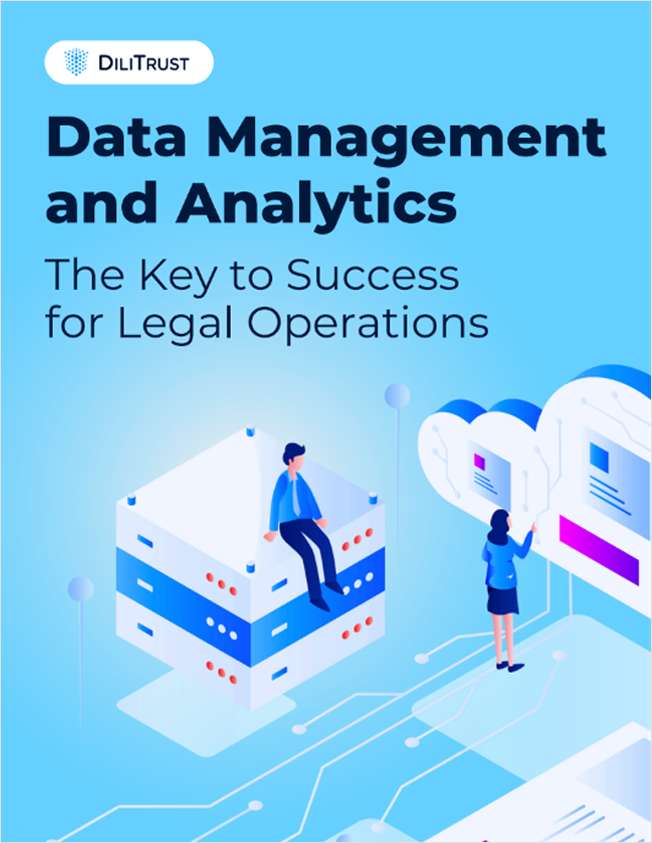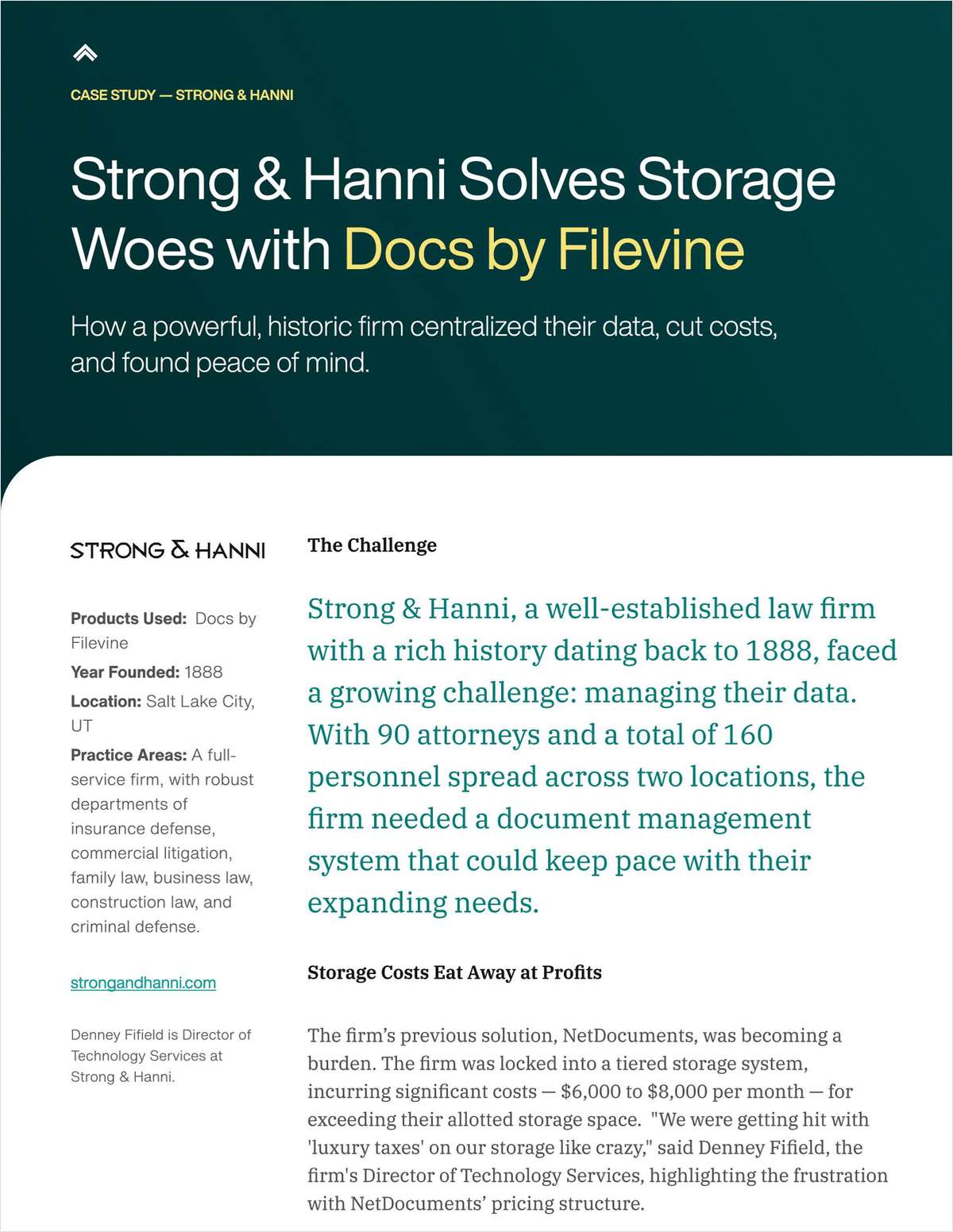 The industry is expected to see big deployment pressure in 2018. Illustration: Shutterstock.com
The industry is expected to see big deployment pressure in 2018. Illustration: Shutterstock.comLitigation Funding: 5 Things to Watch for in 2018
After a year with lots of growth and eye-popping dollar figures, 2018 will see increased pressure for funders to find worthwhile deals.
January 02, 2018 at 12:41 PM
5 minute read
The original version of this story was published on The American Lawyer
Litigation finance had a big year in 2017, one marked by expansion in the United States by major names like Vannin Capital and Woodsford Litigation Funding, eye-popping dollar figures, and large numbers of Big Law hires—as well as some controversies and cases gone awry. Here's a look at five things to watch for in the industry in the months ahead.
|Deployment Pressure
If 2017 was characterized by big money, then 2018 is the year the industry tries to find cases for all that cash. Chicago-based Longford Capital Management announced in September it had raised $500 million, for example, and Woodsford CEO Steven Friel said the funder wants to pour $150 million into funding in the next three years—about three-fourths of it in the U.S. market.
“There's probably too much money flowing into this space, too quickly,” said Allison Chock, head of Bentham IMF's operations in the United States. So where will it all go? One possibility is that shops will seek to do more big, portfolio-style deals and fewer individual cases—something that has already been happening. They may also get into more bank-style financing arrangements, like advancing law firm receivables, something Burford has been doing with its mountains of cash.
It seems plausible that having to push dollars out the door could lead at least some funders to consider taking on riskier cases, said Charles Agee, who helps connect litigants with funders at Westfleet Advisors—although he argues funders have had an unnecessarily high level of risk avoidance to date. He also predicted there might be more competition among funders to create smoother, more efficient approval processes.
But Travis Lenkner, a managing director at Burford, argues there's still plenty of opportunities out there to go around. “The legal market and litigation market remain so large that it would take a truly extraordinary amount of capital enter the market—far more than we've seen to date—to even really make a dent.”
|The Impact of 'TC Heartland' and 'Oil States'
The U.S. Supreme Court's decision in TC Heartland may not have been the jurisdictional silver bullet that defendants were hoping for, but it is likely to route more cases out of the U.S. District Court for the Eastern District of Texas and toward Delaware and the U.S. District Court for the Northern District of California—jurisdictions where patent litigation is likely to take longer, said Chock. That will make the calculus different for funders when considering patent cases, since it will mean a longer-term investment.
Combine that with the threat that the inter partes review system could be struck down in the pending Oil States case, and funders look likely to be a bit more cautious in the IP space. Inter partes review could be seen as beneficial for funders backing IP plaintiffs, since disputes resolve more quickly—win or lose. “There's an argument to be made that it's actually better to fall off the bottom of the mountain,” Chock added.
|Ramping Up in Asia-Pacific
The legalization of litigation funding in Singapore and Hong Kong—which are both marketing themselves as an international arbitration hubs—helped drive the expansion of funders like Burford and Woodsford in the region (both opened offices in Singapore last year). But there might still be more growth on the horizon in South Korea and Japan.
“Whilst the focus of discussion regarding arbitration finance in Asia has been the reforms in Singapore and Hong Kong, we're increasingly seeing a trend of established corporates in Korea and Japan seeking sophisticated forms of legal finance,” Burford vice president James MacKinnon wrote in the company's most recent Burford Quarterly magazine.
“Companies and trading houses in Korea and Japan are making enquiries about portfolio-based legal finance, principally as a means to relieve legal expense budget pressures and its potentially negative effect on share price,” MacKinnon added.
|Little Movement Toward National Disclosure Rules
The U.S. Chamber of Commerce this past fall made a renewed proposal to amend the Federal Rules of Civil Procedure to require automatic disclosure of litigation funding deals in all civil cases in district court. It was a long-game move. Even if the committee charged with making such amendments agreed to take up its proposal, vetting is a multiyear process.
In the end, the Judicial Conference Advisory Committee on Rules of Civil Procedure instead decided to kick the issue to a subcommittee examining possible reforms to multidistrict litigation (MDL). It's not a total loss for the chamber—which has argued that many of the complaints about third-party funding come up in the MDL context. But for now, it seems that 2018 will bring more talk than action around national disclosure rules.
|A Secondary Market for Stakes in Funding Deals?
Early in 2017, Burford announced that it had sold “several million dollars in participation interests in its possible future proceeds” from an ongoing case by a bankrupt company against Argentina, in what is known as the Petersen case. The deal raised eyebrows, since it was one of the first times a major funder had sold off a secondary stake in a pending matter.
The case, which stems from Argentina's expropriation of an energy company in 2012, is up on appeal at the Second Circuit after Argentina lost a motion to dismiss in 2016. Whether the litigation yields a payday for the plaintiff could be a barometer of whether a secondary market for funding deals will develop further, said Chock. “If it's a positive result [for the investor], I think lots of people are going to do this again.”
This content has been archived. It is available through our partners, LexisNexis® and Bloomberg Law.
To view this content, please continue to their sites.
Not a Lexis Subscriber?
Subscribe Now
Not a Bloomberg Law Subscriber?
Subscribe Now
NOT FOR REPRINT
© 2024 ALM Global, LLC, All Rights Reserved. Request academic re-use from www.copyright.com. All other uses, submit a request to [email protected]. For more information visit Asset & Logo Licensing.
You Might Like
View All
Trump Likely to Keep Up Antitrust Enforcement, but Dial Back the Antagonism
5 minute read
As Tech-Focused Roles in C-Suite Expand, Newcomers Embrace Big Law Opportunities
Trending Stories
- 1Infant Formula Judge Sanctions Kirkland's Jim Hurst: 'Overtly Crossed the Lines'
- 2Trump's Return to the White House: The Legal Industry Reacts
- 3Election 2024: Nationwide Judicial Races and Ballot Measures to Watch
- 4Climate Disputes, International Arbitration, and State Court Limitations for Global Issues
- 5Judicial Face-Off: Navigating the Ethical and Efficient Use of AI in Legal Practice [CLE Pending]
- 6How Much Does the Frequency of Retirement Withdrawals Matter?
Who Got The Work
Michael G. Bongiorno, Andrew Scott Dulberg and Elizabeth E. Driscoll from Wilmer Cutler Pickering Hale and Dorr have stepped in to represent Symbotic Inc., an A.I.-enabled technology platform that focuses on increasing supply chain efficiency, and other defendants in a pending shareholder derivative lawsuit. The case, filed Oct. 2 in Massachusetts District Court by the Brown Law Firm on behalf of Stephen Austen, accuses certain officers and directors of misleading investors in regard to Symbotic's potential for margin growth by failing to disclose that the company was not equipped to timely deploy its systems or manage expenses through project delays. The case, assigned to U.S. District Judge Nathaniel M. Gorton, is 1:24-cv-12522, Austen v. Cohen et al.
Who Got The Work
Edmund Polubinski and Marie Killmond of Davis Polk & Wardwell have entered appearances for data platform software development company MongoDB and other defendants in a pending shareholder derivative lawsuit. The action, filed Oct. 7 in New York Southern District Court by the Brown Law Firm, accuses the company's directors and/or officers of falsely expressing confidence in the company’s restructuring of its sales incentive plan and downplaying the severity of decreases in its upfront commitments. The case is 1:24-cv-07594, Roy v. Ittycheria et al.
Who Got The Work
Amy O. Bruchs and Kurt F. Ellison of Michael Best & Friedrich have entered appearances for Epic Systems Corp. in a pending employment discrimination lawsuit. The suit was filed Sept. 7 in Wisconsin Western District Court by Levine Eisberner LLC and Siri & Glimstad on behalf of a project manager who claims that he was wrongfully terminated after applying for a religious exemption to the defendant's COVID-19 vaccine mandate. The case, assigned to U.S. Magistrate Judge Anita Marie Boor, is 3:24-cv-00630, Secker, Nathan v. Epic Systems Corporation.
Who Got The Work
David X. Sullivan, Thomas J. Finn and Gregory A. Hall from McCarter & English have entered appearances for Sunrun Installation Services in a pending civil rights lawsuit. The complaint was filed Sept. 4 in Connecticut District Court by attorney Robert M. Berke on behalf of former employee George Edward Steins, who was arrested and charged with employing an unregistered home improvement salesperson. The complaint alleges that had Sunrun informed the Connecticut Department of Consumer Protection that the plaintiff's employment had ended in 2017 and that he no longer held Sunrun's home improvement contractor license, he would not have been hit with charges, which were dismissed in May 2024. The case, assigned to U.S. District Judge Jeffrey A. Meyer, is 3:24-cv-01423, Steins v. Sunrun, Inc. et al.
Who Got The Work
Greenberg Traurig shareholder Joshua L. Raskin has entered an appearance for boohoo.com UK Ltd. in a pending patent infringement lawsuit. The suit, filed Sept. 3 in Texas Eastern District Court by Rozier Hardt McDonough on behalf of Alto Dynamics, asserts five patents related to an online shopping platform. The case, assigned to U.S. District Judge Rodney Gilstrap, is 2:24-cv-00719, Alto Dynamics, LLC v. boohoo.com UK Limited.
Featured Firms
Law Offices of Gary Martin Hays & Associates, P.C.
(470) 294-1674
Law Offices of Mark E. Salomone
(857) 444-6468
Smith & Hassler
(713) 739-1250










